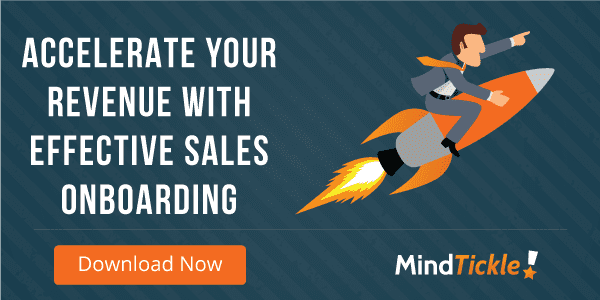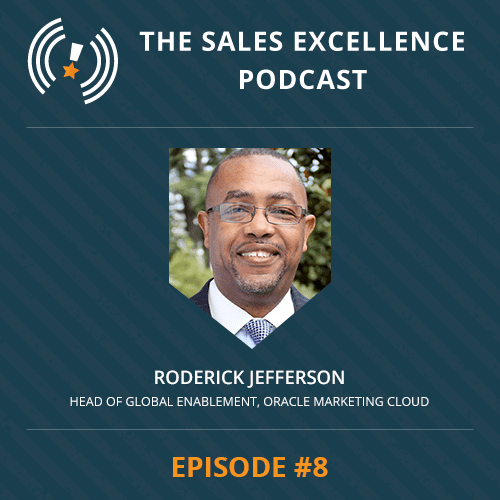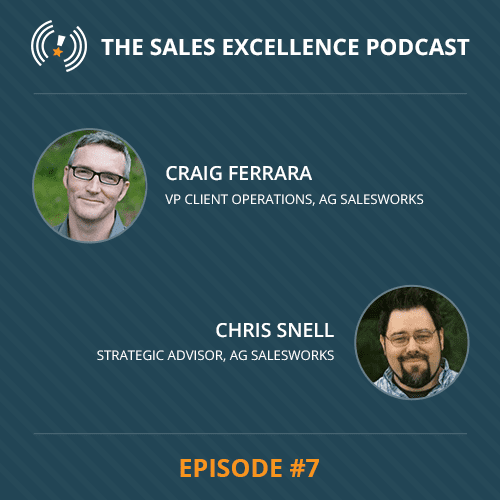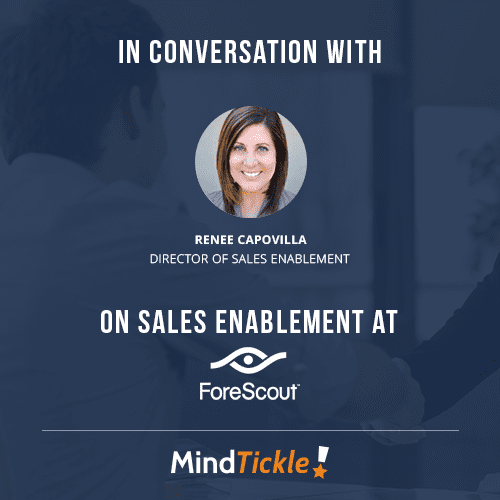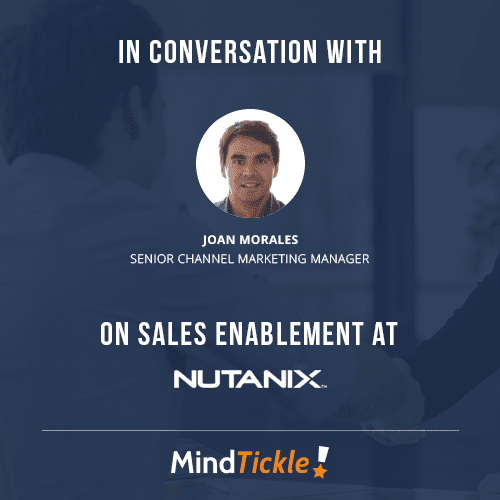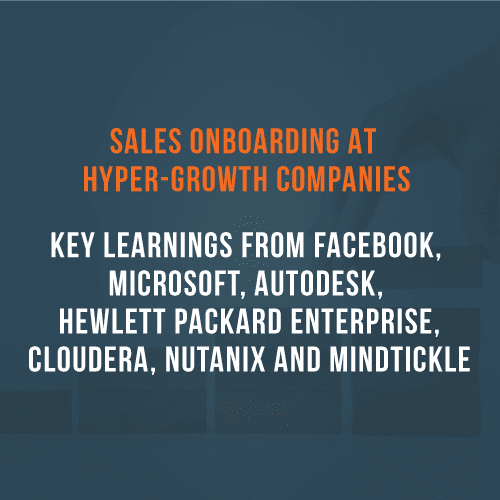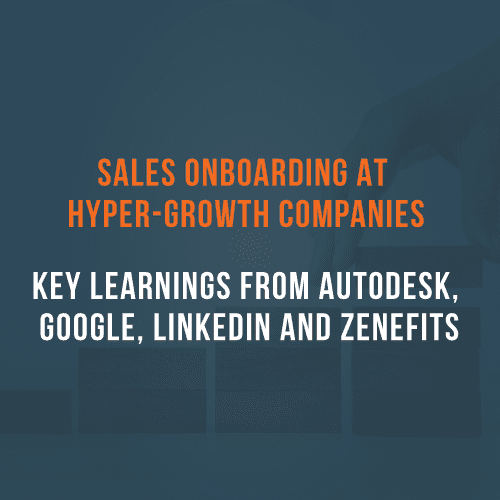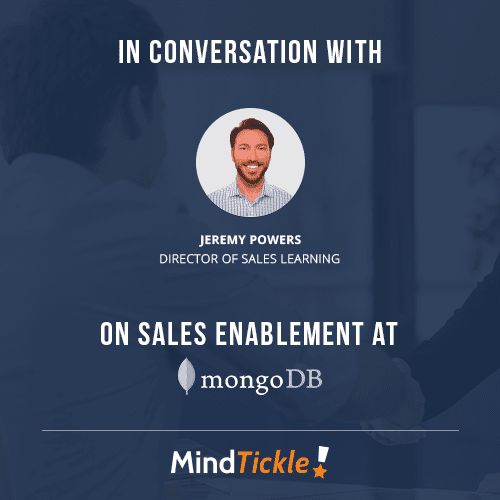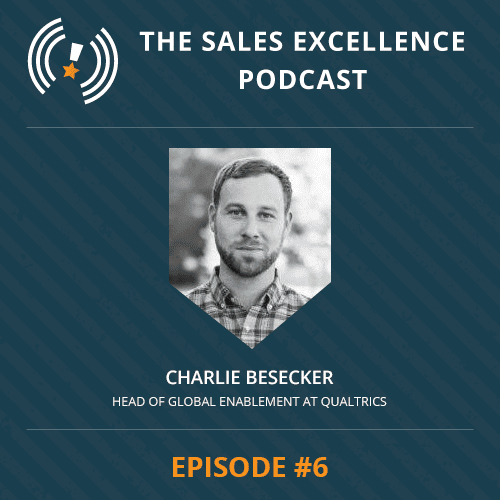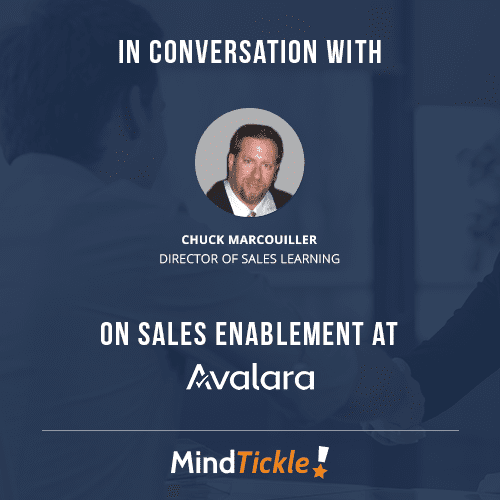In Conversation with CrowdStrike on Sales Onboarding
This post is based on a webinar on how to accelerate new hire productivity for consistent production with sales onboarding. You can listen to the entire webinar here.


Deloitte’s’ technology Fast 500
, North America, recognized for the exponential growth of 2,665% in the past 3 years. Thanks to this stunning growth trajectory the company’s sales force has doubled recently and is continuing to grow rapidly.
Rapid growth comes with its challenges
Trying to maintain exponential growth was CrowdStrike’s biggest sales enablement challenge. To achieve this Tracey Meersman, Director of Sales Enablement, believed the key was to focus in on how they onboarded their new sales hires. It’s a sound strategy when you consider that 60% of businesses with onboarding programs ramp up faster and achieve double the top line revenue per rep with an agile structured onboarding process.
To create their successful onboarding program CrowdStrike ensured it was:
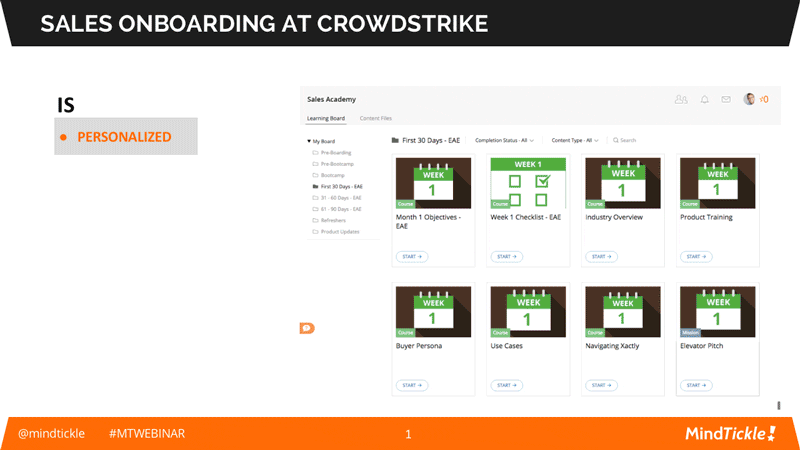

The onboarding program has five distinct phases
“The complete program is pretty quick, just 90 days with ongoing mentoring and coaching opportunities. One of the things that we’re tasked with is helping our B players become A players, and to ramp people as quickly as possible as the cost of onboarding is very expensive. And we’re tasked with trying to get everyone ramped on their phones, so they’re out in the field, selling and achieving quota as quickly as possible,”
comments Meersman.
The 5-part onboarding program was designed to achieve this while incorporating CrowdStrike’s four building blocks of onboarding; compliance, clarity, connection, and culture.
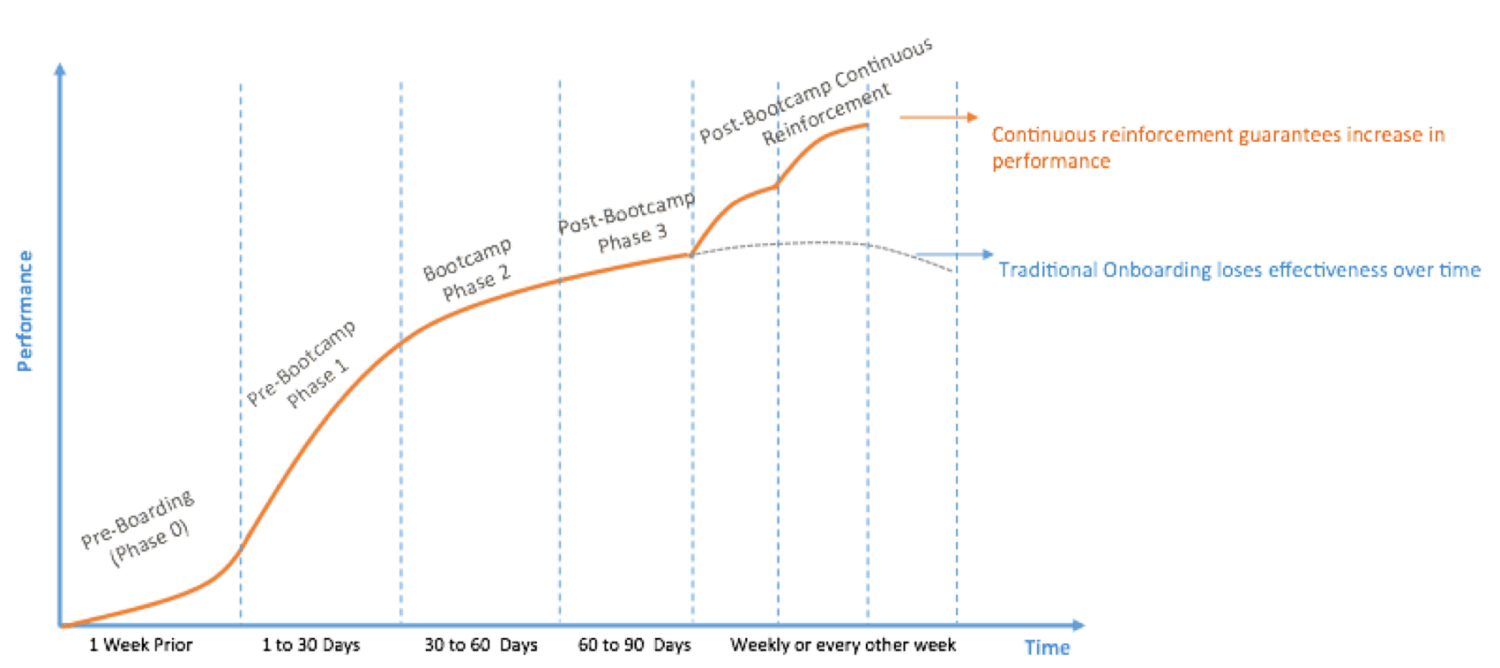

- Pre-Boarding
Phase one begins prior to the new hire commencing with CrowdStrike, leveraging technology to deliver courses to future employees. “
Topics include the company’s strategy, resources, benefits, and compliance. The objective is to identify CrowdStrike’s advantages, complete onboarding activities and reaffirm their decision to join CrowdStrike,”
explains Meersman.
- Pre-Bootcamp
“Phase 2 occurs on the new hire’s start date with a virtual webinar. Topics include a product overview, initiatives and most importantly an opportunity to ask questions. The objective is to accelerate their ramp and productivity by utilizing tools and resources, engaging in the culture and finalizing onboarding requirements. For sales new hires, they are added to the CrowdStrike Sales Academy. A learning platform powered by Mindtickle which we use specifically for sales. New hires are assigned specific learning activities related to their role. This includes the mobile capability to complete learning through the Mindtickle mobile app,”
continues Meersman.
- Bootcamp
“And Phase 3 is an in-person program featuring executive presentations and departmental overview. For new sales hires this includes an additional 1.5-day interactive boot camp to align selling strategies to the company’s growth objectives by articulating our key messages and unique business value. New hires are onboarded a minimum of one week prior to attending the in-person program and there is pre-work to provide foundational knowledge. The boot camp provides an opportunity to pitch back messages in CrowdStrike’s unique business value as well as align with the sales process in the key prospect and customer program. “That allows us to be able to use a scenario-based approach through the Mindtickle platform as well,”
explains Meersman.
- Post-Bootcamp
With boot camp completed the next aspect is to align the learning with real-world selling.
“So how often have we heard from sales reps, ‘I’ve never used this or that. It’s not what my customers want/need to hear’? More than once, right? So our onboarding program aligns with real-world sales scenarios with learning activities at specific intervals in their onboarding journey including the opportunity for sales scenarios and coaching by their manager. they also have the opportunity to have a buddy to be able to reinforce the learning and provide just-in-time information,”
explains Meersman.
- Continuous Reinforcement
“
[Continuous reinforcement] is also a key component that includes personalization, scalability, structured and milestone-based approaches. So each learning activity in CrowdStrike’s sales academy includes a knowledge transfer. We have the ability to teach hires, not penalize them through the use of what Mindtickle refers to as ‘tickles’. So those would be matching true-false to multiple choice questions. There are 16 different tickles within Mindtickle and we try to utilize all of that. We also do continual learning in terms of providing a quick update and courses. We try to push those out on a weekly basis so the new hires are not just getting onboarding information they’re also getting just in time information that’s related to their role,”
outlines Meersman.
Milestones help drive consistency
“It’s imperative for our growth and success that the program is standard and consistent,”
explains Meersman.
“Therefore there are key milestones within the onboarding program at weeks one to four as well as at 60 and 90 days. CrowdStrikes’ Sales Academy provides the structure through workflows, with key milestones to be successfully completed at each interval. The sales rep needs to complete the activities before moving forward to the next onboarding phase. When we’re looking at the components of the onboarding program we’re looking at five distinct areas; one is, understanding the buyer, understanding CrowdStrike’s offerings, beating the competition, CrowdStrike’s differentiation, including our unique business value, use cases and success metrics and all the sales tools and resources.”
Personalization helps each new hire learn what they need to
When you’re onboarding tens or hundreds of new sales reps at a time personalization is a huge challenge. So how does CrowdStrike achieve this?
“First the process and programs need to be personalized for each role. As with many sales organizations, there are various target markets and associated roles and responsibilities. The program needs to be role-based. So our onboarding guide, though applicable for the entire sales team, has call outs for specific roles,”
explains Meersman. This is easily achieved thanks to Mindtickle’s deep integration with
salesforce.com
that enables the onboarding program administrators to allocate aspects of the course to specific roles, markets or responsibilities.
Scalability is achieved by leveraging mobile technology
“The other key component of sales onboarding at CrowdStrike is that it had to be scalable. Utilizing CrowdStrike Sales Academy ensures that the sale onboarding program is scalable through the app based Mindtickle platform. From day 1 forward the program is available 24/7 to new hires. And soon the platform will have the capability for managers to be able to run their own report to track progress,”
comments Meersman.
Experiential learning aligns to real-world selling
“When we looked at our program we also wanted to be able to blend learning and activity. Within our approach and utilizing the Mindtickle platform, we’re able to provide a blend of self-paced knowledge combined with activities that are reviewed by the rep’s manager, which provides a virtual coaching opportunity. This is really key for the manager to be involved in the new hire’s onboarding,”
explains Meersman.
“
This is accomplished by having the reps complete what is known in the Mindtickle platform as missions, that are activities that your rep completes. These include elevator pitches and value proposition as well as email and voicemail pamphlets And respond to specific situations including objection-handling, competitive scenarios etc. So rather than spend time and resources having the new rep deliver the poor pitch during our boot camp, they have to complete this within the CrowdStrike Sales Academy after boot camp. Again this is reviewed by their manager and provides an additional coaching opportunity.”
Experiential learning is also applied to peer-to-peer learning.
“From the experiential learning standpoint it is very key we get this all the time from reps. I’d like to see how one of my peers and how they pitch, how they handle the objection. In the real world they’re often presenting to executives, so they want to be able to build up that knowledge and see how their other peers are doing it as well.”
Utilizing Mindtickle’s app, CrowdStrike is also able to share peer examples so the reps can learn from each other in their own time as well.
“And we talk a lot about sales rep but there’s also the capability for a day technical salespeople to be able to do a demo as well through the platform. So it’s not just the pitches for the field sales rep but also applicable for the technical sales people as well,”
adds Meersman
Communication between reps and management enhances coaching opportunities
Communication should go two ways. Leveraging the Mindtickle app CrowdStrike is able to facilitate this kind of communication.
“This allows the new rep and manager to effectively communicate progress, areas of improvement and also coaching opportunities. Reports are also available to managers so that they can track that progress. Right now I provide those reports to them but there will be a self-service portal coming soon,”
explains Meersman.
Buddying helps build connections
“Additionally each new hire should buddy with a peer with whom they connect on a regular basis, learn how to be successful in their role and feel comfortable asking questions they don’t want to ask their manager. The buddy reinforces the key learnings and helps the new hire if they require training on utilization of key tools and resources. So think of all of those questions that you don’t want to ask your manager like how to use Salesforce, find specific tools and resources etc.”
And make it easy … for reps and for sales enablement
Tools have to be easy to use otherwise they’re not really enabling the rep. “
And that’s really a key component because so many sales reps live in salesforce they have access to the Mindtickle platform through salesforce. So there’s no need to login to an official website. This makes it very very easy and because the Mindtickle app has the mobile capability as well it’s also very easy to access.”
But enablement and collaboration are also important for the administrators of the system as Meersman explains, “
I am a strong party of one. A one-woman show in terms of creating and maintaining the content. I know of many who are probably in the same situation. The good news is that I have a great relationship with our product marketing organization. And we work together to be able to create content. And also others meet within the organization depending on what the topic is.”
“So my commercial for Mindtickle is nobody ever said that it was fun using an LMS. I love the Mindtickle platform and our reps do as well because we have the mobile capability, we have the tickles or the gamification and social aspects, and we can push out bite-size chunks to people as well as perform better missions which are really the scenario-based approaches. And that provides reinforcement.”
Meersman continues “
My philosophy is it does not have to be so hard. In every sales enablement role I’ve had, it’s been a new role and I basically had to onboard myself which in turn led me to create onboarding programs for sale new hires. It was challenging for me, I didn’t have it to be challenging for the new sales hire. It’s my role and responsibility to connect the dots for sales reps to make it easier to learn quickly and attain specific productivity metrics.”
CrowdStrike’s onboarding program has been a success for management and reps
CrowdStrike has seen impressive results with their new hire sales onboarding. “
The typical ramp time for an enterprise software sales rep in our industry is six to 12 months. However, we’ve been able to fully ramp reps in half that time. Over 70% of ramped reps achieved or exceeded quota in their first quarter following their ramp.”
Meersman continues,
“We define ramp as the rep’s ability to achieve quota.”
“Our boot camp has received an overall rating of 4.8 out of 5. 99% of reps recommend the program, but in terms of value, our ratings are 100%. And we’re also correlating the training to learning. Out of our top 10 reps, the majority has been onboard for less than one year but are top in completing training. And several of them have been promoted. We also use KPIs and our onboarded reps are achieving or overachieving those KPIs as well,”
Meersman says proudly.
And the feedback from the field speaks for itself.
“Of all my years of various on boarding / new hire trainings I will say that this was the best experience and easiest to grasp.” ~
New sales rep
“You’ve got it down to a science, and I just wanted you to know how valuable it was in helping to get me ramped up.” ~
New sales rep


